FGF21 attenuates neuroinflammation following subarachnoid hemorrhage through promoting mitophagy and inhibiting the cGAS-STING pathway
- PMID: 38720350
- PMCID: PMC11077765
- DOI: 10.1186/s12967-024-05239-y
FGF21 attenuates neuroinflammation following subarachnoid hemorrhage through promoting mitophagy and inhibiting the cGAS-STING pathway
Abstract
Background: Subarachnoid hemorrhage (SAH) represents a form of cerebrovascular event characterized by a notable mortality and morbidity rate. Fibroblast growth factor 21 (FGF21), a versatile hormone predominantly synthesized by the hepatic tissue, has emerged as a promising neuroprotective agent. Nevertheless, the precise impacts and underlying mechanisms of FGF21 in the context of SAH remain enigmatic.
Methods: To elucidate the role of FGF21 in inhibiting the microglial cGAS-STING pathway and providing protection against SAH-induced cerebral injury, a series of cellular and molecular techniques, including western blot analysis, real-time polymerase chain reaction, immunohistochemistry, RNA sequencing, and behavioral assays, were employed.
Results: Administration of recombinant fibroblast growth factor 21 (rFGF21) effectively mitigated neural apoptosis, improved cerebral edema, and attenuated neurological impairments post-SAH. Transcriptomic analysis revealed that SAH triggered the upregulation of numerous genes linked to innate immunity, particularly those involved in the type I interferon (IFN-I) pathway and microglial function, which were notably suppressed upon adjunctive rFGF21 treatment. Mechanistically, rFGF21 intervention facilitated mitophagy in an AMP-activated protein kinase (AMPK)-dependent manner, thereby preventing mitochondrial DNA (mtDNA) release into the cytoplasm and dampening the activation of the DNA-sensing cyclic GMP-AMP synthase (cGAS)-stimulator of interferon genes (STING) signaling pathway. Conditional knockout of STING in microglia markedly ameliorated the inflammatory response and mitigated secondary brain injuries post-SAH.
Conclusion: Our results present the initial evidence that FGF21 confers a protective effect against neuroinflammation-associated brain damage subsequent to SAH. Mechanistically, we have elucidated a novel pathway by which FGF21 exerts this neuroprotection through inhibition of the cGAS-STING signaling cascade.
Keywords: FGF21; Microglia; Mitophagy; Subarachnoid haemorrhage; cGAS-STING; mtDNA.
© 2024. The Author(s).
Conflict of interest statement
The authors have declared that no conflict of interest exists.
Figures
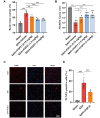

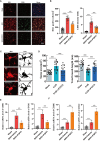
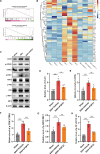
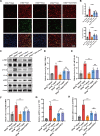
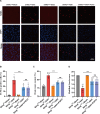
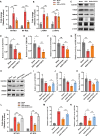
Similar articles
-
RU.521 mitigates subarachnoid hemorrhage-induced brain injury via regulating microglial polarization and neuroinflammation mediated by the cGAS/STING/NF-κB pathway.Cell Commun Signal. 2023 Sep 28;21(1):264. doi: 10.1186/s12964-023-01274-2. Cell Commun Signal. 2023. PMID: 37770901 Free PMC article.
-
Protective role of mitophagy on microglia-mediated neuroinflammatory injury through mtDNA-STING signaling in manganese-induced parkinsonism.J Neuroinflammation. 2025 Feb 28;22(1):55. doi: 10.1186/s12974-025-03396-5. J Neuroinflammation. 2025. PMID: 40022162 Free PMC article.
-
Silybin attenuates microglia-mediated neuroinflammation via inhibition of STING in experimental subarachnoid hemorrhage.Int Immunopharmacol. 2025 Apr 4;151:114305. doi: 10.1016/j.intimp.2025.114305. Epub 2025 Feb 21. Int Immunopharmacol. 2025. PMID: 39986195
-
Mitochondrial DNA Leakage and cGas/STING Pathway in Microglia: Crosstalk Between Neuroinflammation and Neurodegeneration.Neuroscience. 2024 Jun 7;548:1-8. doi: 10.1016/j.neuroscience.2024.04.009. Epub 2024 Apr 27. Neuroscience. 2024. PMID: 38685462 Review.
-
Unraveling the cGAS-STING pathway in Alzheimer's disease: A new Frontier in neuroinflammation and therapeutic strategies.Neuroscience. 2025 May 7;573:430-441. doi: 10.1016/j.neuroscience.2025.04.001. Epub 2025 Apr 2. Neuroscience. 2025. PMID: 40185388 Review.
Cited by
-
Olfactory mucosa mesenchymal stem cell-derived exosomes protect against neuroinflammation after subarachnoid hemorrhage by activating mitophagy.Kaohsiung J Med Sci. 2025 Apr;41(4):e12951. doi: 10.1002/kjm2.12951. Epub 2025 Feb 19. Kaohsiung J Med Sci. 2025. PMID: 39969074 Free PMC article.
-
The myokine FGF21 associates with enhanced survival in ALS and mitigates stress-induced cytotoxicity.bioRxiv [Preprint]. 2024 Sep 14:2024.09.11.611693. doi: 10.1101/2024.09.11.611693. bioRxiv. 2024. Update in: Aging (Albany NY). 2025 Aug 09;17. doi: 10.18632/aging.206298. PMID: 39314333 Free PMC article. Updated. Preprint.
-
Ubiquitin-specific peptidase 30-mediated deubiquitination of forkhead box O3 promotes the progression of subarachnoid hemorrhage by regulating cGAS/STING pathway.Neuroreport. 2025 Sep 3;36(13):719-727. doi: 10.1097/WNR.0000000000002192. Epub 2025 Jul 11. Neuroreport. 2025. PMID: 40736326 Free PMC article.
-
Genetically-engineered Salmonella typhimurium expressing FGF21 promotes neurological recovery in ischemic stroke via FGFR1/AMPK/mTOR pathway.J Neuroinflammation. 2025 Jun 28;22(1):170. doi: 10.1186/s12974-025-03498-0. J Neuroinflammation. 2025. PMID: 40581646 Free PMC article.
-
Competing risk analysis of dexmedetomidine use and postoperative outcomes in non-traumatic subarachnoid hemorrhage patients.Eur J Med Res. 2025 Jul 30;30(1):688. doi: 10.1186/s40001-025-02962-0. Eur J Med Res. 2025. PMID: 40739266 Free PMC article.
References
-
- Hoh BL et al. 2023 Guideline for the management of patients with aneurysmal subarachnoid hemorrhage: a guideline from the American heart association/American stroke association. Stroke. 2023;54:e314–e370. - PubMed
Publication types
MeSH terms
Substances
Grants and funding
LinkOut - more resources
Full Text Sources
Research Materials

